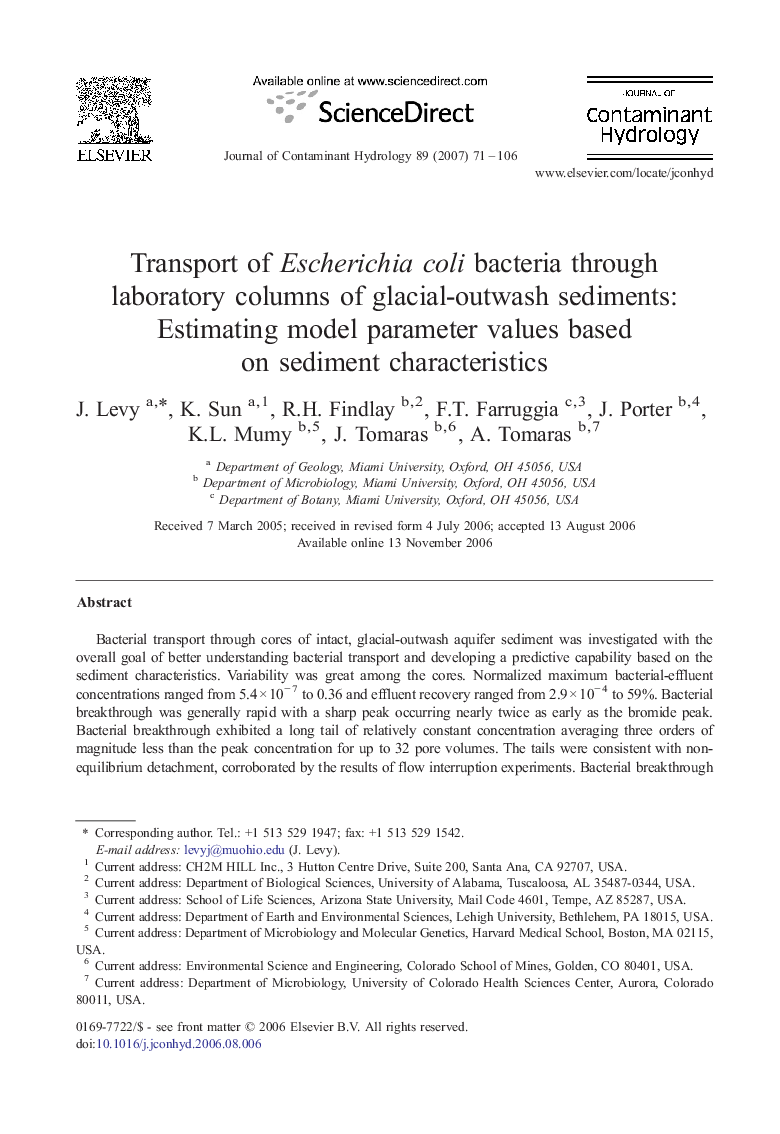| Article ID | Journal | Published Year | Pages | File Type |
|---|---|---|---|---|
| 4547749 | Journal of Contaminant Hydrology | 2007 | 36 Pages |
Abstract
Bacterial transport through cores of intact, glacial-outwash aquifer sediment was investigated with the overall goal of better understanding bacterial transport and developing a predictive capability based on the sediment characteristics. Variability was great among the cores. Normalized maximum bacterial-effluent concentrations ranged from 5.4 Ã 10â 7 to 0.36 and effluent recovery ranged from 2.9 Ã 10â 4 to 59%. Bacterial breakthrough was generally rapid with a sharp peak occurring nearly twice as early as the bromide peak. Bacterial breakthrough exhibited a long tail of relatively constant concentration averaging three orders of magnitude less than the peak concentration for up to 32 pore volumes. The tails were consistent with non-equilibrium detachment, corroborated by the results of flow interruption experiments. Bacterial breakthrough was accurately simulated with a transport model incorporating advection, dispersion and first-order non-equilibrium attachment/detachment. Relationships among bacterial transport and sediment characteristics were explored with multiple regression analyses. These analyses indicated that for these cores and experimental conditions, easily-measurable sediment characteristics - median grain size, degree of sorting, organic-matter content and hydraulic conductivity - accounted for 66%, 61% and 89% of the core-to-core variability in the bacterial effective porosity, dispersivity and attachment-rate coefficient, respectively. In addition, the bacterial effective porosity, median grain size and organic-matter content accounted for 76% of the inter-core variability in the detachment-rate coefficient. The resulting regression equations allow prediction of bacterial transport based on sediment characteristics and are a possible alternative to using colloid-filtration theory. Colloid-filtration theory, used without the benefit of running bacterial transport experiments, did not as accurately replicate the observed variability in the attachment-rate coefficient.
Keywords
Related Topics
Physical Sciences and Engineering
Earth and Planetary Sciences
Earth-Surface Processes
Authors
J. Levy, K. Sun, R.H. Findlay, F.T. Farruggia, J. Porter, K.L. Mumy, J. Tomaras, A. Tomaras,
